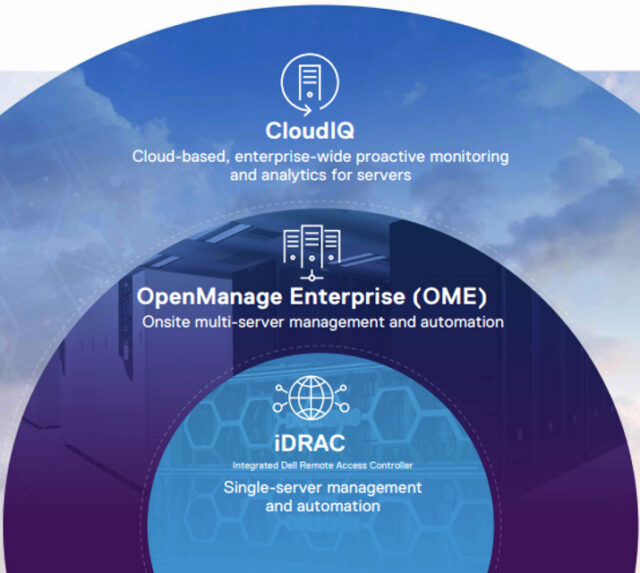Artificial intelligence for IT operations (AIOps) software provides IT administrators and DevSecOps teams with the insights to resolve many infrastructure issues without having to escalate them within their organization or make equipment vendor service requests.
CloudIQ is the AIOps application for Dell’s full range of infrastructure systems. Its artificial intelligence/machine learning (AI/ML) and other algorithms empower IT administrators with system health and cybersecurity notifications and recommendations, and other insights, to resolve issues proactively and quickly.
Over the past few months, we’ve expanded CloudIQ with four self-service-enabling features for Dell PowerEdge servers: VMware virtualization view, performance forecasting, maintenance operations and server systems needing updates.
VMware Virtualization View
VMware virtualization view identifies the relationship of virtual and physical infrastructure and their status with an interface similar to VMware vCenter, which is popular with VMware administrators. This is designed to maximize server administrators’ virtual machine (VM) management productivity.
At a glance, CloudIQ displays all vCenter instances, their locations, which servers are associated with each local vCenter and the VMs. This intuitive view lets you quickly check server health status and metrics, such CPU, memory and capacity usage – a first step in ensuring VMs are getting the server resources they need. To troubleshoot this further, you can click from the virtualization view directly into CloudIQ’s deep host server analytics with anomaly detection, as well as vCenter itself.
CloudIQ also provides the same vCenter-like view for Dell storage and hyperconverged systems to maximize their administrators’ VM management productivity.
Performance Metrics Forecasting
Performance forecasting predicts server utilization for proactively avoiding outages, handling surge events, planning system upgrades or rebalancing workloads as necessary.
Need to plan a maintenance window for a server? See the performance forecast to find possible times of low utilization. Curious if systems will be approaching high utilization or will max out sometime in the future? Performance forecasting also enables users to forecast if or when they should expand their infrastructure footprint by adding more servers and to identify opportunities for balancing workloads onto other systems.
Performance forecasting for servers is supported for CPU, memory, system and IO usage.
Maintenance Operations
Maintenance operations enable privileged users to blink server LEDs, power servers on or off and execute server firmware updates to speed repair and lifecycle management.
Actions are initiated in CloudIQ (hosted in Dell’s highly secure data center) and are executed by Dell OpenManage Enterprise software instances deployed on-premises at your organization’s sites and connected to iDRAC controllers in each of your servers.
For example, server administrators can blink LEDs on a server to facilitate physical discovery and identification within a data center for hardware replacement. If servers are nonresponsive and have undesirable behavior, server administrators can power off and power on servers. If administrators suspect that data in CloudIQ is stale for servers, they can initiate a data refresh. Lastly, server administrators improve their productivity by performing firmware updates for multiple servers at once, even across locations, directly from CloudIQ.
Server Systems Needing Updates
CloudIQ’s systems updates page helps you organize and efficiently manage the process of keeping servers across all your locations optimized and secure with the latest firmware releases. The page indicates which servers and components are compliant with the latest firmware releases, which servers need firmware updates and each firmware release’s criticality (e.g., urgent, recommended or optional). Administrators with the required permission can simultaneously initiate firmware updates for up to 200 servers with a single command directly from CloudIQ’s systems update page.
With increased awareness that CloudIQ brings, administrators can make more timely and proactive firmware updates to your fleet of servers across all your locations. Updating many servers at once provides a simple and fast process to ensure they are consistent with the firmware versions you expect.

See the New Features in Action
Because CloudIQ is SaaS-based, a constant flow of new features like those introduced here become instantly available whenever users log into CloudIQ UI via their browsers – no download required. First-time users can get started with CloudIQ today, because it is included with Dell ProSupport/ProSupport Plus contracts and is easy to initiate.
Watch the CloudIQ AIOps for PowerEdge AIOps Demo, the CloudIQ Cybersecurity Demo and see white papers, data sheets and more demos.


